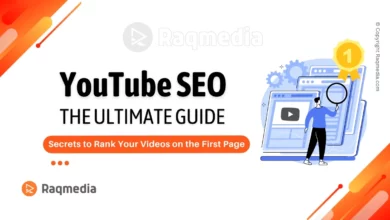In the vast landscape of digital exploration, a new frontier is emerging – one that goes beyond the confines of traditional keyword searches. Enter semantic search, a sophisticated technology that delves deep into user intent and meaning to revolutionize how we interact with information online. Have you ever wondered how search engines seem to grasp your queries with uncanny precision, almost as if they can read your mind? That's the power of semantic search at work, deciphering not just keywords but context, emotions, and nuances in our language.
Table of Contents
- 1 Unlocking the Power of Semantic Search
- 2 Understanding Semantic Search
- 3 Impact on SEO Strategy
- 4 Enhancing User Experience Through Semantic Search
- 5 Future Trends in Semantic Search
- 6 Case Studies: Successful Implementation of Semantic Search
- 7 Challenges and Solutions in Semantic Search Adoption
- 8 Unlocking the Potential of Semantic Search
- 9 Final Tips
- 10 FAQs:
- 10.1 Q: How does semantic search impact traditional SEO tactics?
- 10.2 Q: What role does structured data markup play in enhancing content relevance?
- 10.3 Q: Can businesses benefit from personalized results offered by semantic search?
- 10.4 Q: How can I optimize content for featured snippets on SERPs?
- 10.5 Q: Will voice search continue influencing semantic technologies?
Unlocking the Power of Semantic Search
Gone are the days when we solely relied on rigid keyword matches; now, semantic search opens a realm where machines comprehend human language intricacies. This evolution marks a significant shift from merely matching strings of text to understanding the very essence of what users seek.

Imagine typing a question rather than staccato keywords – semantic search deciphers these queries effortlessly, providing you with tailored results that resonate with your needs. Join us on this enlightening journey as we unravel the intricate tapestry of semantic search and explore its transformative impact on our digital experiences.
Understanding Semantic Search
Semantic search represents a paradigm shift in how search engines decode user queries. Unlike traditional keyword-based searches, semantic search delves deeper to grasp the context and intent behind a search term. For instance, when a user enters “best Italian restaurants near me,” semantic search algorithms analyze not just the keywords but also the user's location and preferences to offer tailored results. This capability to understand user intent elevates the overall search experience by providing more relevant and personalized outcomes.
Context plays a pivotal role in semantic search, as it enables search engines to decipher the true meaning of a query. Consider the word “jaguar” – without context, it could refer to either the animal or the car brand. Semantic search takes into account various contextual cues like browsing history, geographic location, and related terms to determine which interpretation is most likely relevant to the user. By considering context alongside keywords, search engines can serve up results that align more closely with what users are actually seeking.
Machine learning and natural language processing (NLP) are instrumental in enhancing semantic search capabilities. Through machine learning algorithms, search engines can continuously refine their understanding of language patterns and user behavior to deliver more accurate results over time. NLP technologies empower systems to comprehend human language nuances, such as synonyms and conversational phrases, thereby enabling them to interpret queries more intelligently. These underlying technologies work in tandem to bring about a new era of sophisticated searching that goes beyond mere matching of keywords.
Impact on SEO Strategy
In the realm of digital marketing, adjusting SEO strategies to align with semantic search algorithms has become indispensable for improving a website's visibility and relevance in search engine results. Unlike traditional keyword-based approaches, semantic search emphasizes understanding user intent and context, requiring a shift towards more nuanced optimization techniques. By delving deeper into what users are truly searching for rather than just targeting specific keywords, businesses can enhance their online presence significantly.
One effective strategy involves implementing structured data markup, such as schema.org markup, to provide search engines with explicit information about the content on a webpage. For instance, using schema markup to mark up product reviews or FAQs can lead to rich snippets in search results, making the content more eye-catching and informative for users. This structured data not only aids search engines in comprehending the content better but also improves the chances of appearing in featured snippets – those coveted position zero spots on SERPs.

Moreover, embracing long-tail keywords and natural language phrases is key to adapting to semantic search preferences. For example, instead of optimizing solely for generic terms like “best coffee shop,” businesses can target more specific queries like “cozy coffee shops near me with free Wi-Fi.” By tailoring content around conversational queries that mimic how users naturally speak or type their searches, websites can cater to semantic search algorithms' inclination towards providing precise and relevant results based on user context.
By integrating these tactics into their SEO playbook, businesses can not only keep pace with evolving search trends but also enhance their overall digital marketing strategies. The strategic use of structured data markup and a focus on long-tail keywords and conversational phrases can ultimately boost a website's visibility, attract qualified traffic, and improve user engagement – all vital components for thriving in today's competitive online landscape.
Enhancing User Experience Through Semantic Search
In the realm of digital marketing, optimizing user experience is paramount for success. Semantic search plays a crucial role in enhancing user engagement by understanding and catering to individual preferences. By providing personalized search results based on user behavior and interests, websites can create a more tailored experience for their visitors. For instance, e-commerce platforms like Amazon utilize semantic search to recommend products based on past purchase history and browsing habits, creating a seamless shopping journey for their customers.
Continuously monitor trends in semantic search technology to refine your strategies accordingly.
Moreover, optimizing content for featured snippets and rich answers on search engine results pages (SERPs) is a key strategy in leveraging the power of semantic search. Websites that structure their content effectively using relevant schema markup stand a higher chance of appearing in featured snippets, which are highlighted at the top of SERPs. For example, if a user searches ‘how to tie a tie,' Google may display a step-by-step guide directly in the search results through a featured snippet, attracting users with concise and useful information without them having to click through multiple links.
Schema markup further enhances website visibility and credibility by providing search engines with additional context about the content on web pages. This structured data helps search engines understand the meaning behind the information presented, leading to more accurate indexing and improved relevance in search results. Businesses that implement schema markup not only improve their chances of ranking higher but also ensure that their content resonates better with users seeking specific answers or solutions online.
Future Trends in Semantic Search
As the digital landscape evolves, future trends in semantic search are poised to revolutionize how users interact with search engines. One significant trend on the horizon is the continued growth of voice search and its impact on semantic search technology. With the rise of virtual assistants like Siri, Alexa, and Google Assistant, more searches are being conducted through voice commands. This shift necessitates a deeper understanding of natural language processing and user intent to deliver accurate results based on spoken queries rather than text inputs.

Moreover, advancements in AI-driven algorithms are set to enhance the precision of semantic understanding. Machine learning algorithms powered by artificial intelligence are constantly refining their ability to decipher context and semantics, leading to more relevant search results for users. These technologies not only analyze keywords but also comprehend the meaning behind words, improving the quality of search outcomes and user experiences.
Another key aspect shaping the future of search engine rankings is entity-based optimization. Moving beyond traditional keyword strategies, entity-based optimization focuses on identifying specific entities or concepts in content to establish relevance within a given context. By structuring data around entities such as people, places, events, or products, websites can align themselves more effectively with semantic search principles and improve their visibility in search results.
In essence, the future of semantic search is intricately tied to advancing technologies that enable a deeper understanding of user queries and content relevance. By embracing trends such as voice search integration, AI-driven algorithms, and entity-based optimization strategies, businesses can stay ahead in harnessing the full potential of semantic search for enhanced online visibility and improved user engagement.
Case Studies: Successful Implementation of Semantic Search
Taking a dive into real-world applications, we can explore how companies have harnessed the power of semantic search to enhance their online presence. One prime example is how a leading e-commerce retailer revamped its SEO strategy by incorporating semantic search principles. By understanding user intent beyond keywords, they tailored their product descriptions to match the natural language queries users posed. This shift not only boosted their organic traffic but also improved conversion rates, showcasing the direct impact of semantic optimization on tangible business outcomes.
In contrast, a traditional SEO approach might focus solely on stuffing content with popular keywords without considering the context or user's actual needs. Another case study demonstrates how a local service provider leveraged schema markup and structured data to align with semantic search algorithms effectively. By clearly defining entities like services offered, locations served, and customer reviews through structured data, they saw a significant increase in their visibility on search engine results pages (SERPs). This success story highlights the evolution from keyword-centric strategies to more nuanced semantic approaches that yield higher relevance and engagement metrics.
Align your content with user intent rather than focusing solely on keywords.
Comparing these real-life scenarios with conventional SEO practices underscores the substantial difference in outcomes achieved through semantic optimization techniques. Instead of chasing after generic high-volume keywords, businesses are now tailoring their content to address specific user queries with rich contextual information. This shift not only positions them as authorities in their respective domains but also enhances user experience by delivering precise and relevant answers. Ultimately, these case studies exemplify how embracing semantic search is not just a trend but a strategic imperative for modern businesses looking to thrive in the digital landscape.
Challenges and Solutions in Semantic Search Adoption
As businesses navigate the shift towards a semantic-focused approach, several challenges often arise. One common obstacle is the need to reframe traditional SEO strategies that heavily rely on keyword optimization. Embracing semantic search means understanding that context and user intent play pivotal roles in search engine algorithms. This shift requires a more profound comprehension of how users interact with search engines and the type of information they seek. A solution to this challenge involves conducting thorough keyword research aligned with conversational phrases and long-tail keywords for a more natural fit within semantic search frameworks.
Optimizing content for semantics can also pose difficulties, especially when it comes to integrating structured data markup effectively. This step is crucial for providing search engines with additional context about the content on a website, enhancing its relevance to user queries. Overcoming this hurdle necessitates investing time and resources into mastering schema markup implementation or seeking assistance from professionals well-versed in semantic optimization techniques. Moreover, ensuring consistency across all content types and platforms is essential to maximize the benefits of a semantic strategy.
In conclusion, unlocking the power of semantic search opens up new possibilities for enhancing online visibility and engaging users more effectively. By addressing challenges such as shifting SEO tactics, embracing contextual relevance, and optimizing content for semantics, businesses can position themselves for success in an evolving digital landscape.
Be proactive in adapting your SEO practices to align with the evolving landscape of semantic search.
The key takeaway lies in understanding that semantic search not only improves search engine rankings but also fosters a deeper connection with audiences by delivering tailored and meaningful search results. Embracing these principles will propel organizations towards sustainable growth and increased competitiveness in the digital realm.
This write-up conveys important insights regarding the challenges faced by businesses transitioning to a semantic-focused approach while also providing practical solutions aimed at optimizing content effectively for improved online visibility through semantic search strategies.
Unlocking the Potential of Semantic Search
A Path to Enhanced Online DiscoverabilityIn a digital landscape driven by user intent and context, understanding semantic search is no longer just an option—it's a necessity for anyone looking to thrive online. By delving beyond traditional keyword-based strategies, semantic search has revolutionized how content is discovered, delivering personalized and relevant results like never before. With machine learning and natural language processing at its core, this technology continues to shape the future of online search experiences.
As digital marketers, SEO professionals, content creators, and website owners embrace the power of semantic search, they empower themselves to connect more effectively with their target audiences. By optimizing for semantics, businesses can elevate their visibility on search engine result pages (SERPs), provide tailor-made experiences for users, and stay ahead in a rapidly evolving online ecosystem. Embracing structured data markup, leveraging conversational phrases, and honing in on long-tail keywords are just a few of the strategies that can propel brands towards success in the era of semantic-driven searches.
Through real-world case studies showcasing successful semantic search implementations and insights into overcoming common adoption challenges, it becomes clear that the journey towards mastering semantic search involves both innovation and adaptation. As we look toward the future of search technology—encompassing voice-led interactions, AI advancements, and entity-based optimization—it's evident that those who grasp the nuances of semantic search will seize unparalleled opportunities to amplify their online presence.
Final Tips
As you navigate the realm of semantic search and strive to optimize your digital presence effectively, here are three key tips to keep in mind:
- Focus on User Intent: Understanding and catering to user intent is paramount in semantic search. Rather than fixating solely on specific keywords, delve deeper into what your audience seeks when they conduct a search. For instance, if you run a food blog and a user searches for “best vegan restaurants near me,” ensure your content not only features those keywords but also provides valuable information on vegan dining options in the local area. By aligning with user intent, you increase the chances of your content appearing prominently in search results.
- Stay Current with Structured Data: Embracing structured data markup is crucial for enhancing the visibility and relevance of your website's content. By marking up elements like reviews, events, or recipes with schema.org tags, search engines can better understand the context of your pages, potentially leading to rich snippets in SERPs. For example, utilizing schema markup to highlight recipe ingredients and cooking times can make your culinary content more appealing to both search engines and users seeking quick recipe answers.
- Optimize for Voice Search: With the rise of voice-activated assistants like Siri and Alexa, optimizing your content for voice search queries is essential for staying ahead in the semantic search landscape. Consider how users phrase spoken queries—typically longer and more conversational compared to typed searches—and incorporate natural language phrases accordingly. For instance, if you own an online clothing store, tailor your product descriptions to include phrases like “What are some trendy summer outfits” to align with voice search preferences effectively.
By implementing these tips thoughtfully into your semantic search strategy, you can enhance your online visibility, engage users more effectively, and adapt proactively to the evolving digital landscape.
FAQs:
Q: How does semantic search impact traditional SEO tactics?
A: Semantic search requires a shift from keyword-centric approaches towards understanding user intent through context and meaning.
Q: What role does structured data markup play in enhancing content relevance?
A: Structured data markup helps search engines interpret content more accurately and display rich snippets that improve visibility.
Q: Can businesses benefit from personalized results offered by semantic search?
A: Absolutely! Tailoring content based on user behavior enhances engagement levels and brand trust significantly.
Q: How can I optimize content for featured snippets on SERPs?
A: Crafting concise answers to commonly asked questions within your content increases the likelihood of securing featured snippet placements.
Q: Will voice search continue influencing semantic technologies?
A: Voice search is poised to grow substantially and will necessitate further advancements in AI-driven algorithms to enhance semantic interpretation.









